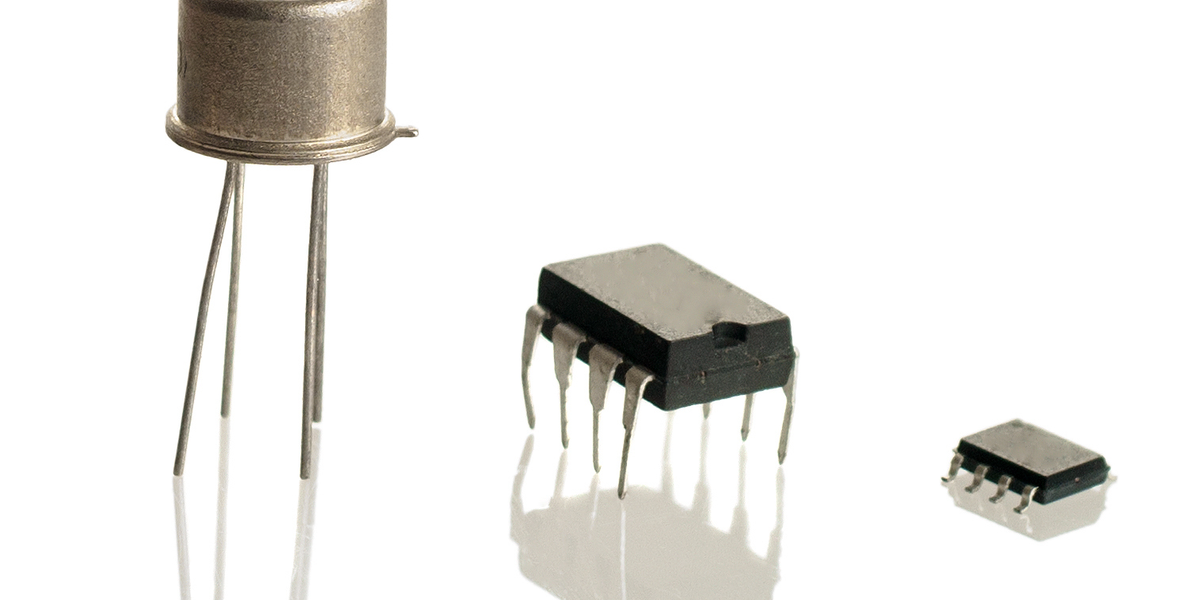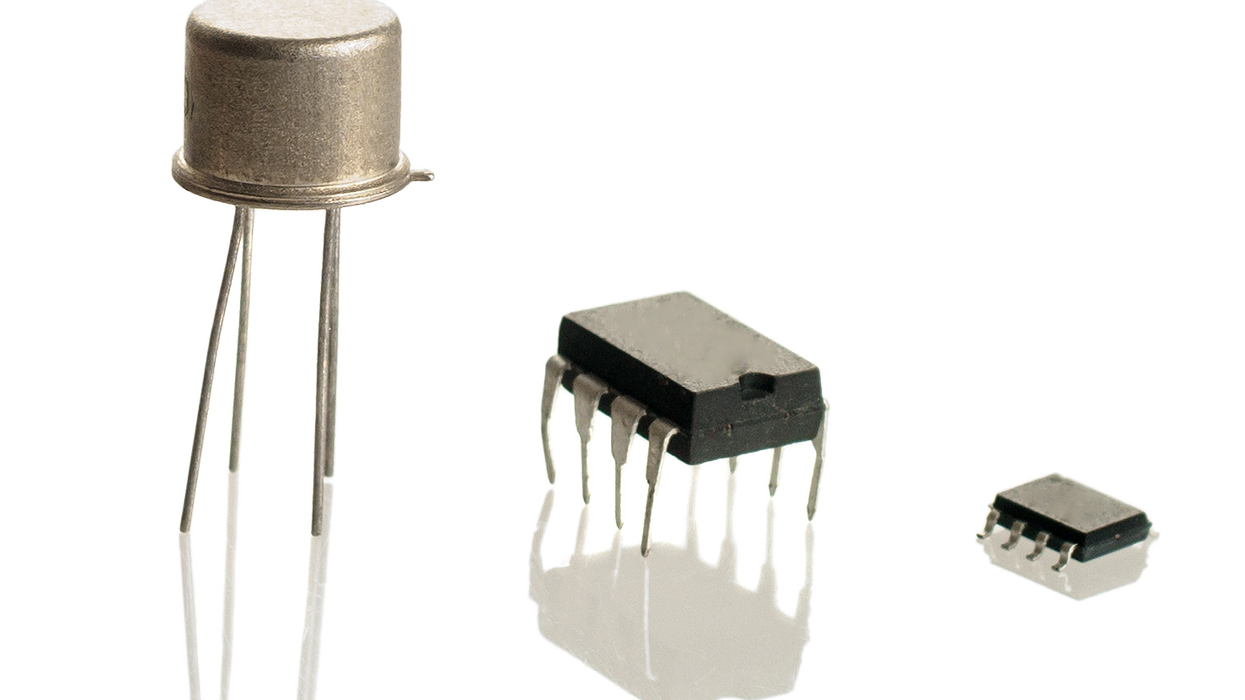

The most obvious change in transistor technology in the last 75 years has been just how many we can make. Reducing the size of the device has been a titanic effort and a fantastically successful one, as these charts show. But size isn’t the only feature engineers have been improving.
In 1947, there was only one transistor. According to TechInsight’s forecast, the semiconductor industry is on track to produce almost 2 billion trillion (1021) devices this year. That’s more transistors than were cumulatively made in all the years prior to 2017. Behind that barely conceivable number is the continued reduction in the price of a transistor, as engineers have learned to integrate more and more of them into the same area of silicon.
Scaling down transistors in the 2D space of the plane of the silicon has been a smashing success: Transistor density in logic circuits has increased more than 600,000-fold since 1971. Reducing transistor size requires using shorter wavelengths of light, such as extreme ultraviolet, and other lithography tricks to shrink the space between transistor gates and between metal interconnects. Going forward, it’s the third dimension, where transistors will be built atop one another, that counts. This trend is more than a decade old in flash memory, but it’s still in the future for logic (see “Taking Moore’s Law to New Heights.”)
Perhaps the crowning achievement of all this effort is the ability to integrate millions, even billions, of transistors into some of the most complex systems on the planet: CPUs. Here’s a look at some of the high points along the way.
What Transistors Have Become
Besides making them tiny and numerous, engineers have devoted their efforts to enhancing the device’s other qualities. Here is a small sampling of what transistors have become in the last 75 years:
Ephemeral:
Researchers in Illinois developed circuits that dissolve in the body using a combination of ultrathin silicon membranes, magnesium conductors, and magnesium oxide insulators. Five minutes in water was enough to turn the first generation to mush. But recently researchers used a more durable version to make temporary cardiac pacemakers that release an anti-inflammatory drug as they disappear.
Fast:
The first transistor was made for radio frequencies, but there are now devices that operate at about a billion times those frequencies. Engineers in South Korea and Japan reported the invention of an indium gallium arsenide high-electron mobility transistor, or HEMT, that reached a maximum frequency of 738 gigahertz. Seeking raw speed, engineers at Northrop Grumman made a HEMT that passed 1 terahertz.
Flat:
Today’s (and yesterday’s) transistors depend on the semiconducting properties of bulk (3D) materials. Tomorrow’s devices might rely on 2D semiconductors, such as molybdenum disulfide and tungsten disulfide. These transistors might be built in the interconnect layers above a processor’s silicon, researchers say. So 2D semiconductors could help lead to 3D processors.
Flexible:
The world is not flat, and neither are the places transistors need to operate. Using indium gallium arsenide, engineers in South Korea recently made high-performance logic transistors on plastic that hardly suffered when bent around a radius of just 4 millimeters. And engineers in Illinois and England have made microcontrollers that are both affordable and bendable.
Invisible:
When you need to hide your computing in plain sight, turn to transparent transistors. Researchers in Fuzhou, China, recently made a see-through analogue of flash memory using organic semiconductor thin-film transistors. And researchers in Japan and Malaysia produced transparent diamond devices capable of handling more than 1,000 volts.
Mnemonic:
NAND flash memory cells can store multiple bits in a single device. Those on the market today store either 3 or 4 bits each. Researchers at Kioxia Corp. built a modified NAND flash cell and dunked it in 77-kelvin liquid nitrogen. A single superchilled transistor could store up to 7 bits of data, or 128 different values.
Talented:
In 2018, engineers in Canada used an algorithm to generate all the possible unique and functional elementary circuits that can be made using just two metal-oxide field-effect transistors. The number of circuits totaled an astounding 582. Increasing the scope to three transistors netted 56,280 circuits, including several amplifiers previously unknown to engineering.
Tough:
Some transistors can take otherworldly punishment. NASA Glenn Research Center built 200-transistor silicon carbide ICs and operated them for 60 days in a chamber that simulates the environment on the surface of Venus—460 °C heat, a planetary-probe-crushing 9.3 megapascals of pressure, and the hellish planet’s corrosive atmosphere.
This article appears in the December 2022 print issue as “The State of the Transistor.”
Reference: https://ift.tt/05UNioI
No comments:
Post a Comment